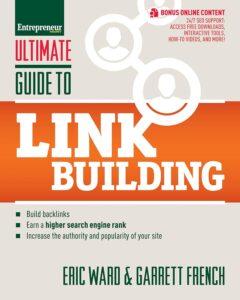Click here to buy secure, speedy, and reliable Web hosting, Cloud hosting, Agency hosting, VPS hosting, Website builder, Business email, Reach email marketing at 20% discount from our Gold Partner Hostinger You can also read 12 Top Reasons to Choose Hostinger’s Best Web Hosting
Many site owners and writers still ask: what is guest posting in SEO and whether it’s worth the time. The problem is twofold: low-quality guest posts used purely to “drop links” got stamped out after Google’s warnings, and editors ignore bland pitches — so your effort often produces no traffic or measurable ROI. That frustrates teams who need predictable content channels. The solution is a modern, risk-free guest-posting approach that focuses on relevance, audience-first value, and distribution — not just backlinks. This guide shows exactly how to find safe targets, how to submit, a ready-to-use outreach template, a practical 20-site starter list (free options), and how to scale guest posting without tripping search-engine penalties.
Guest posting has long been a powerful tool for improving SEO, building credibility, and reaching a wider audience. But as it becomes more popular, finding quality opportunities can be tricky. Let’s dive into the nuts and bolts of guest posting, the strategies to locate these sites, and why it’s worth the effort.
What is guest posting in SEO
Guest posting (or guest blogging) is contributing an article to another site or publication with the goal of reaching a new audience, demonstrating expertise, and — when natural and allowed — earning links and referral traffic back to your site. Done well, it builds awareness and relationships. Done badly, it’s thin content that search engines and editors treat as link spam. Google has explicitly warned against large-scale, low-quality “contributor” link schemes, so modern guest posting must be editorial-first and audience-first.
Why guest posting still matters (the smart way)
Audience reach: publishing on a higher-traffic niche site exposes your work to readers who already care about your topic.
Authority & trust: strong, thoughtful contributions position you as an expert in your niche.
Referral traffic & conversions: real readers click through — that’s sustainable, trackable value.
Relationship building: editors, community managers, and other contributors become distribution partners.

Important: Don’t treat guest posting like a link mill. Google flags campaigns where the main intent is links rather than editorial value. Prioritize audience-first content and transparent attributions.
5 SEO Problems Killing Your Traffic (and How the SEMrush 7-Day Trial Fixes Them)
A fresh, practical framework — the PRIME method
Use PRIME to plan each guest post:
Pick audience-first targets (who reads the site?)
Research what performs there (format, length, tone, keywords)
Introduce a unique angle (data, original checklist, or a mini-case study)
Make the pitch short and irresistible (title + 2-sentence why + links to two relevant samples)
Execute distribution after publish (share on social, newsletter, and developer/tech communities)
This keeps effort measurable and safe from “link scheme” penalties.
7 Best Free Long-Tail Keyword Research Tool Options to Boost Your SEO
How to submit a guest post — exact step-by-step
Find targets: use Google search operators (e.g.,
intitle:"write for us" technology,inurl:write-for-us "guest post") and content tools like Ahrefs Content Explorer to find active, relevant sites.Audit the site: check traffic quality, recent post cadence, comment engagement, editorial tone, and whether author bylines link (and whether those links are
nofolloworsponsored).Craft your idea: submit 1–3 specific headlines + 2–3 bullet points that preview the article. Avoid “I will write about X” — give the reader the why and the takeaway.
Follow guidelines: every site’s submission page differs. If they ask for a Google Doc, send a view-only doc; if they want full HTML, send clean text.
Pitch template (short):
Subject: Quick pitch — [Headline idea]
Body: One crisp hook sentence about why their readers will care. One line about your credentials (link to 1–2 published samples). Suggested H1 and 3–4 bullets for the article. Close with availability.
After acceptance: deliver on time, include natural contextual links (not spammy), give a short author bio with one link (or as the editor requests).
Promotion: share the published post across channels, tag the host, and add it to your portfolio.
Outreach email example (copy-paste ready)
Subject: Quick pitch — How to cut cloud costs by 30% with small infra fixes
Hi [Name],
I read your recent piece on X and thought your readers would appreciate a step-by-step guide showing modest infra changes that reduce cloud bills by ~30% without downtime. I can deliver a 900–1,200 word piece with a short checklist and a mini case study.
Samples: [link1], [link2]
Suggested H1: Cut cloud costs 30%: 6 low-risk infra moves for engineers
3 bullets: problem, concise step list, measurable results + CTA.
Available to start this week — thanks for considering.
— [Your name + 1-line credential]
What are White Label Guest Posts – A Practical Guide for Agencies and SEOs
20 free guest posting sites list (starter targets & how to approach them)
Note: Editorial policies change. Always check a site’s “Write for us” or contributor page before pitching. The list below mixes platforms and niche publications that commonly accept contributors or community posts; treat each as a place to pitch, not an automatic backlink source.
Developer & Tech Platforms
Dev.to — community posts; friendly to developer how-tos.
Hashnode — developer blogging platform (great for technical tutorials).
DZone — developer-focused guides and tool explainers.
Hacker Noon — technology stories and explainers (pitch via contributor page).
SitePoint — web dev and design articles.
Medium & Publications
6. Medium (Targeted publications: Towards Data Science, The Startup, Better Programming) — submit to publications on Medium that match your niche.
7. LinkedIn Articles — publish on your profile and tag relevant communities to amplify.
Business & Marketing
8. Business2Community — accepts contributors in marketing and business verticals.
9. Guest posts on industry-specific aggregators (search for “write for us [niche]”)
Niche Tech & Ops
10. InfoQ (some contributor formats) — developer and architecture topics.
11. DZone (repeat for depth — different zones accept different formats)
12. TechTarget Community or Network — niche enterprise topics (check editorial).
Host & SaaS Blogs (community contributions)
13. Hostinger Blog (contributor content sometimes accepted)
14. DigitalOcean Community — tutorials and how-tos (great for devops content).
Design / Product / Startup
15. Smaller niche publications / product community blogs — e.g., product/design blogs that accept guest posts. (Search site:.com "write for us" "product design".)
Local & Community Blogs
16. Local tech meetup blogs — many city developer meetups host guest posts.
17. University/college tech blogs — often accept practical tutorials.
Aggregators & Medium-style directories
18. Substack cross-post (with permission) — publish on Substack and syndicate with permission.
19. Industry-specific forums with publishing (e.g., certain cybersecurity communities)
20. Medium partner publications plus curated newsletters — pitch editors of newsletters that accept contributed posts.
Want a deeper list of 300+ candidate sites? Use content directories or Ahrefs Content Explorer to pull active “write for us” pages filtered by domain authority and recency.
Paid guest-post services — Fiverr, Upwork, and Adsy (how to use them safely)
Many teams outsource parts of guest posting to marketplaces. Fiverr, Upwork, and Adsy are common choices. Treated well, they speed outreach and content production. Treated badly, they bring low-quality placements and risk. Below is a drop-in section that matches the article voice: short, practical, and editorial-first.
Fiverr — quick gigs, variable quality
Fiverr is handy for one-off experiments or small tasks. You’ll find low-cost gigs and fast turnarounds. But quality varies a lot. Only work with sellers who show live published links, full post samples, and recent, consistent reviews. Do not buy bulk promises without examples.
Upwork — hire for managed outreach
Upwork works better for ongoing, higher-touch work. Use it to hire an outreach specialist, a writer who also pitches editors, or a small agency. Look for detailed proposals, clear outreach plans, and references. Use interviews — treat proposals like hiring for a role, not buying a listing.
Adsy — transparent sponsored placements
Adsy connects buyers to publishers who sell sponsored posts. It’s useful when you want predictable inventory and pricing. Expect sponsored labels or nofollow attributes. Use Adsy when you’re buying placement intentionally (not claiming it’s earned editorial space).
Quick vetting checklist (always use this)
Ask for live URLs of published posts (no screenshots).
Check the host site: recent activity, editorial tone, and engagement.
Confirm link attributes:
dofollow,nofollow, orsponsored— get it in writing.Demand original content; refuse AI-spun or recycled copy.
Request an editorial contact (editor or community manager).
Require UTM-tagged links so you can track referrals.
Red flags
Bulk claims like “DA 50+ placements” with no examples.
Sellers who refuse to share live links or editor contacts.
Offers focused on exact anchor-text volume over content quality.
Vague guarantees about traffic or rankings without proof.
Suggested contract terms (simple and practical)
Deliverable: one published article with a live URL.
Link policy: specify link count, anchor text rules, and attribute type.
Reuse: you keep a short excerpt for your site; full republish only if the host allows.
Payment: escrow or milestone — partial on acceptance, remainder on live publish + verification.
Reporting: seller supplies the live URL and confirms UTM-tagged link(s).
Bottom line: Fiverr, Upwork, and Adsy can be useful supplier channels. Treat them like vetted vendors. Make editorial value the primary KPI and view links as a measurable bonus.
The web today is comprised of trillions of links: links between websites, links within social media venues like Facebook and Twitter, and even links in email inboxes. Who links to a site and how they link to it is one of the most important factors that search engines rely on when ranking results. But how do marketers control this? Link building expert Eric Ward provides the answers.
Sharing little-known techniques for link building via social media platforms, blogs, partnerships, public relations, articles, and more, Ward teaches marketers which link-building techniques will maximize the quality links that point to their site, allowing them to charm both search engines and customers and which methods to avoid.
This one-of-a-kind guide details a variety of link building tools, tactics, and techniques illustrated by case studies, expert interviews, and resources. Ward leaves no opportunity unexplored, and no link-building questions unanswered.
Guest posting + technology — topics that perform
If you write about technology, favor articles that solve immediate pains:
Pragmatic tutorials (step-by-step infra/debug guides)
Short how-tos with code snippets or configuration blocks
Cost-savings or performance wins with real numbers
Tool comparisons that include screenshots and pros/cons
Migration stories (how we moved X to Y with fewer issues)
Tech audiences value reproducibility: include code, commands, benchmarks, and a short TL;DR.
Using “guest posts searcharoo” — how to find opportunities fast
(“Searcharoo” here means fast search hunting using operators and tools.)
Google operators:
intitle:"write for us" "technology",inurl:contribute "guest",site:medium.com "write for us".Social signals: search Twitter/X for “guest post” + the niche.
Tools: Ahrefs Content Explorer — filter for recent posts and “guest post” mentions to find active editors.
When to use guest post services (and how to evaluate them)
Use agencies/services if you need volume and they follow white-hat rules. Vet vendors by asking:
Can you show editorial contacts and real placements (live links)?
Do they write original, audience-first content or spin low-quality articles?
How do they handle author bylines and link attributes?
Do they disclose placements and traffic impact (post-publish reporting)?
If a service promises guaranteed DA x backlinks in bulk — be cautious.
Mini case study (example workflow)
Scenario: SaaS startup wants brand awareness in DevOps circles.
Plan: PR-IME — pick Dev.to and DigitalOcean Community, research top-performing tags, pitch a reproducible tutorial with a small benchmark, get accepted, publish, then syndicate to LinkedIn and the company newsletter.
Outcome (hypothetical): steady referral traffic, new trial signups tied to article links, and a repeat invitation from the host site for a follow-up — measured via UTM tags and referral analytics.
Key Takeaways
Guest posting is still useful when the primary goal is audience value, not raw backlinking.
Follow PRIME: pick right targets, research, offer a unique angle, pitch tightly, and promote after publish.
Use tools (Ahrefs, Content Explorer, Google operators) to discover active guest opportunities.
20 starter places above mix developer platforms, publications, and local/community options — always check submission pages first.
Vet guest-posting services carefully; avoid large-scale link campaigns that look like link schemes.
FAQs (People Also Ask)
Q: Is guest posting bad for SEO?
No — not inherently. It’s bad only when used at scale as a thin link-building tactic. Editorial, audience-first contributions remain valuable and safe when links are natural and not the sole intent.
Q: How many sites should I pitch to land one guest post?
Expect to pitch 5–10 sites per secured placement as a reasonable baseline; tailor each pitch rather than mass-sending the same message.
Q: Can I republish my guest post on my blog?
Often yes, but always ask the host’s policy. If allowed, use canonical tags or a short excerpt with a link to the original to avoid duplicate-content confusion.
Q: Do guest posts always provide backlinks?
Not always. Some editors use nofollow or require no-follow for author links. Treat the link as a bonus — prioritize traffic and audience alignment.
Conclusion
If you asked what is guest posting in seo to decide whether to invest time — the short answer is: yes, but only when done with an audience-first, editorial mindset. Use guest posts to deliver documented value, measure real referral results, and build relationships with editors. Start with the 20 starter venues above, use the PRIME method for every pitch, and treat distribution as part of the work — not an optional extra.
Try this: pick one site from the 20 above, use the outreach template, and send a pitch this week. Track referral traffic and shares for 90 days — then scale what works.
Sources (official / recommended):
Google Search Central — A reminder about links in large-scale article campaigns (developer blog). Google for Developers
Ahrefs — Guest Blogging for SEO: Everything You Need to Know. Ahrefs
Now loading...







